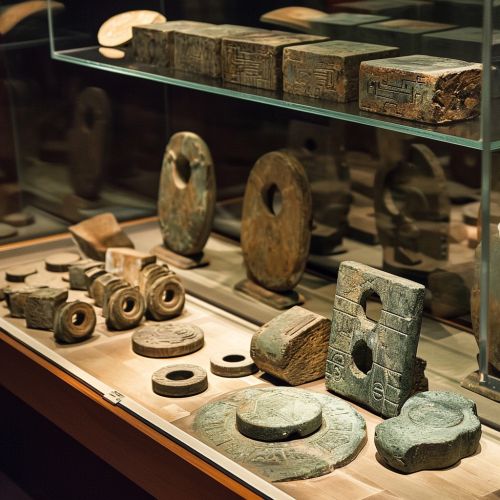The Nine Chapters on the Mathematical Art
Overview
"The Nine Chapters on the Mathematical Art" (Chinese: 九章算术) is a Chinese mathematics book, composed by several generations of scholars from the 10th–2nd century BCE. Its latest stage of substantial revision and annotation was completed by the mathematician Liu Hui in 263 CE.
The book is one of the earliest surviving mathematical texts from China, the first being Suan shu shu and Zhoubi Suanjing. It lays out an approach to mathematics that centres on finding the most general methods of solving problems, which may be contrasted with the approach common to ancient Greek mathematicians, who tended to deduce propositions from an initial set of axioms.


Content
The Nine Chapters is divided into nine sections, each focusing on a different mathematical aspect. The various sections deal with the following areas of mathematics:
1. Rectangular Fields: Problems involving the measurement of fields and the calculation of areas. 2. Millet and Rice: Problems involving the distribution of grain. 3. Distribution by Proportion: Problems involving proportions and the calculation of quantities. 4. Short Widths: Problems involving the calculation of lengths. 5. Consultation on Works: Problems involving engineering works and the calculation of volumes. 6. Fair Taxes: Problems involving taxation and the calculation of tax rates. 7. Excess and Deficit: Problems involving interest calculations and the laws of motion. 8. Rectangular Arrays: Problems involving the arrangement of arrays. 9. Base and Altitude: Problems involving the calculation of heights and distances.
The book also provides solutions to mathematical problems often by means of geometry. For example, to solve a problem about the distribution of grain, the solution involves converting the problem to one about area. This is similar to the modern use of algebra to solve problems, which is why the book is considered a precursor to classical algebra.
Influence
The Nine Chapters had a great influence on Chinese mathematics, and was the main textbook used for teaching mathematics until the modern period. It was translated into many languages and spread to neighboring countries like Japan and Korea, becoming the foundation for their mathematical knowledge as well.
The book also influenced the development of mathematical thought in China. It introduced the concept of solving problems by reducing them to simpler problems, a method that is still used in algebra today. It also introduced the use of the Pythagorean theorem, which is a fundamental theorem in Euclidean geometry.
Legacy
The Nine Chapters has left a lasting legacy in the field of mathematics. It has been studied and annotated by many scholars over the centuries. In the 3rd century, the mathematician Liu Hui wrote a detailed commentary on the book, providing solutions to the problems and even improving on the original text. His commentary, known as "Haidao Suanjing", is considered a gem in the history of Chinese mathematics.
The book was also an important source for the development of algebra and geometry in China. It introduced the concept of solving problems by reducing them to simpler problems, a method that is still used in algebra today. It also introduced the use of the Pythagorean theorem, which is a fundamental theorem in Euclidean geometry.
See Also
Chinese mathematics Liu Hui Haidao Suanjing Pythagorean theorem
